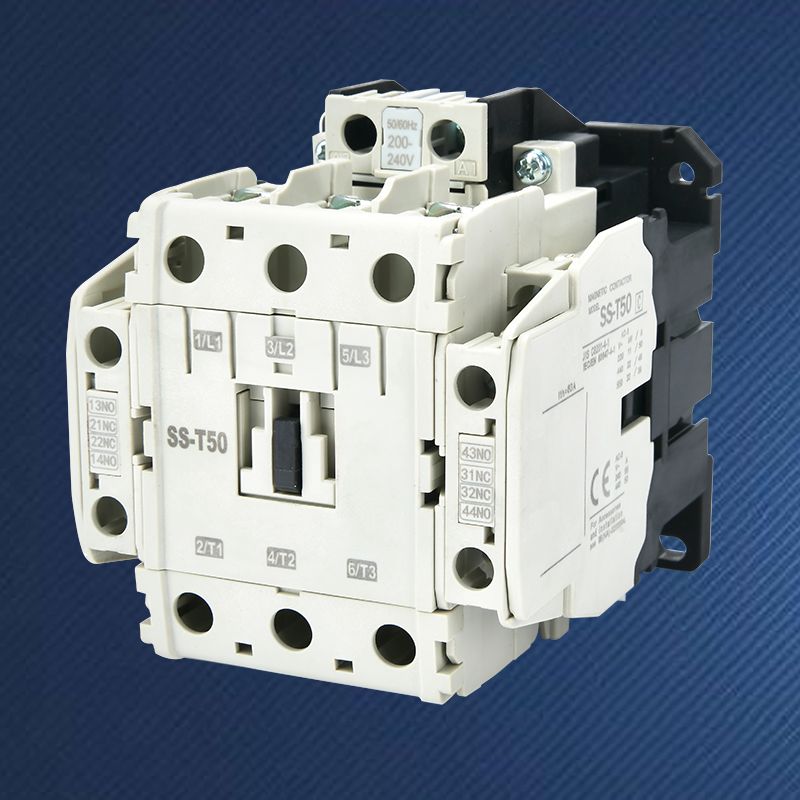Understanding Electrical Contactors: Function, Types, and Applications
2025-02-13
An electrical contactor is a critical component in the world of electrical engineering and automation. It is an electrically controlled switch used to power electrical circuits, allowing high-current loads to be controlled by low-current circuits. Contactors are widely used in industrial, commercial, and residential settings, playing a vital role in ensuring the safe and efficient operation of electrical systems. This article explores the purpose, functionality, types, and applications of electrical contactors.
What is an Electrical Contactor?
An electrical contactor is a type of relay specifically designed for switching electrical power circuits. Unlike regular relays that handle low current, contactors are built to control and manage high currents, making them ideal for heavy-duty applications. They are commonly used to switch motors, lighting systems, heating equipment, and other high-power electrical loads.
Contactors are typically operated by an electromagnetic coil, which, when energized, creates a magnetic field that closes or opens the contacts within the device. These contacts are the key components that enable or interrupt the flow of electrical power in a circuit.
Key Features of Electrical Contactors
1. High Current Capacity:
Contactors are designed to handle currents ranging from a few amps to several hundred amps, depending on the application.
2. Durability:
They are built to endure frequent switching and can operate reliably over a long lifespan.
3. Electrical Isolation:
Contactors provide electrical isolation between the control circuit and the power circuit, ensuring safety.
4. Arc Suppression:
When switching high currents, arcs may form across the contacts. Contactors are designed with arc suppression mechanisms to minimize damage and ensure reliable operation.
5. Auxiliary Contacts:
Many contactors include auxiliary contacts for additional functions, such as providing feedback to control systems.
How Does a Contactor Work?
The operation of a contactor involves three main components:
1. Electromagnetic Coil:
When voltage is applied to the coil, it generates a magnetic field that pulls the movable core and closes the contacts.
2. Contacts:
These are the conductive elements that make or break the electrical connection. Contactors typically have three main contacts for three-phase power and auxiliary contacts for control circuits.
3. Enclosure:
The enclosure houses and protects the internal components. It is often made of insulating materials to prevent electrical hazards.
When the coil is de-energized, the magnetic field disappears, and the contacts return to their original position, interrupting the circuit.
Types of Electrical Contactors
Contactors come in various types, each suited for specific applications:
1. Magnetic Contactors:
These are the most common type, operated using an electromagnetic coil. They are used for applications such as motor control and lighting.
2. Knife Blade Contactors:
An older design, these use a lever mechanism for manual operation and are typically found in vintage or low-tech systems.
3. Vacuum Contactors:
These use a vacuum to extinguish the arc during switching, making them suitable for high-voltage applications.
4. Solid-State Contactors:
These utilize semiconductor devices instead of mechanical contacts, offering faster switching and longer life in applications where noise and wear are concerns.
5. Definite Purpose Contactors:
Designed for specific applications like HVAC systems, these are cost-effective and optimized for their intended use.
Applications of Electrical Contactors
Electrical contactors are used in a wide range of applications across different industries:
1. Motor Control:
Contactors are commonly used to start and stop electric motors in industrial machinery, conveyor systems, and pumps.
2. Lighting Control:
In commercial buildings, contactors are used to control large lighting systems, enabling centralized operation.
3. Heating and Cooling Systems:
HVAC systems rely on contactors to control heating elements, fans, and compressors.
4. Industrial Automation:
Contactors are essential in automation systems to control various processes and equipment.
5. Power Distribution:
Contactors are used in switchgear and panelboards to manage power distribution in industrial and commercial facilities.
6. Renewable Energy:
In solar and wind energy systems, contactors are used to switch high-current circuits and manage power flow.
Benefits of Electrical Contactors
1. Improved Safety:
Contactors provide electrical isolation and reduce the risk of electrical shock and equipment damage.
2. Efficiency:
They allow centralized and automated control of electrical loads, reducing manual intervention and errors.
3. Reliability:
Designed for heavy-duty operation, contactors ensure consistent performance even in demanding environments.
4. Versatility:
Contactors are available in various configurations, making them suitable for diverse applications.
5. Energy Saving:
By automating the control of equipment, contactors help reduce energy consumption and optimize system performance.
Conclusion
Electrical contactors are indispensable components in modern electrical systems. Their ability to handle high currents, ensure safety, and enable automation makes them a critical part of industrial, commercial, and residential applications. Whether in motor control, lighting, or power distribution, contactors play a key role in the efficient and reliable operation of electrical systems. Understanding their functionality and applications can help in selecting the right type of contactor for specific needs, ensuring optimal performance and safety.



